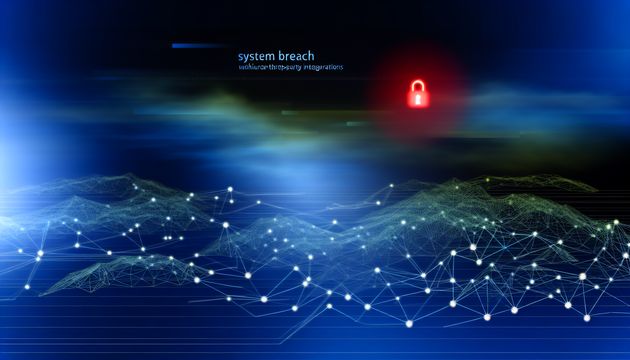
Understanding and Combating Fast Flux in Cybersecurity
Fast Flux is a clever trick used by cybercriminals to make their malicious activities harder to stop and trace. By quickly changing DNS records, like IP addresses, Fast Flux makes it tough for cybersecurity teams to track down and shut down these operations. This technique often works with botnets, which are networks of hacked devices acting as middlemen, helping to quickly switch IP addresses and hide the real location of the bad guys (Bleeping Computer).
There are two main types of Fast Flux: Single Flux and Double Flux. Single Flux involves frequently changing the IP addresses linked to a domain name, while Double Flux adds another layer by also changing the DNS name servers linked to the domain (CISA). This technique is popular in phishing scams and malware networks, helping attackers dodge security tools that rely on fixed blacklists (DN.org).
Understanding Fast Flux
Fast Flux DNS Technique
Fast Flux is a smart way cybercriminals use DNS to hide their tracks and keep their operations running. It involves quickly changing the DNS records for a domain, like IP addresses, making it hard for cybersecurity teams to catch them. This method often uses botnets, which are groups of hacked devices acting as go-betweens. These botnets help quickly switch IP addresses, hiding where the bad guys really are (Bleeping Computer).
Variants of Fast Flux
There are two main types of Fast Flux: Single Flux and Double Flux. Single Flux means frequently changing the IP addresses linked to a domain name, making it hard for defenders to block the bad domain because a new IP address pops up quickly. Double Flux adds another layer by also changing the DNS name servers linked to the domain, making it even harder to shut down (CISA).
Use Cases and Impact
Fast Flux is used by all kinds of cybercriminals, from small-time crooks to big-time hackers. It’s common in phishing scams, where attackers set up fake websites that look like real ones for banks or social media. By quickly changing the IP addresses for these domains, attackers can dodge security tools that rely on fixed blacklists. Malware networks also use Fast Flux to deliver harmful software while making it hard for investigators to track them down (DN.org).
Challenges in Detection and Mitigation
Spotting and stopping Fast Flux is really tough because it’s always changing. The technique lets hackers link one bad domain to many IP addresses. If defenders block one IP, the domain just uses another. This constant change gives bad domains extra cover and makes them hard to catch (GovInfoSecurity).
Collaborative Efforts for Defense
To fight Fast Flux, cybersecurity agencies suggest working together. This means government bodies, Internet service providers (ISPs), and cybersecurity companies teaming up to create solutions. By joining forces, they can better defend against Fast Flux and close the gaps in cybersecurity (CISA).
Real-World Examples
Some big ransomware groups, like those behind Gamaredon and Hive ransomware, use Fast Flux to avoid the law and keep their attacks going. Bulletproof hosting services also use this technique to help bad actors run their operations without getting caught. These services rely on Fast Flux to make it hard for authorities to take down bad websites or find their operators (UNDERCODE NEWS).
Technical Details and Indicators of Compromise
Fast Flux works by setting up a network of hacked computers, called “bots” or “zombies,” which act as middlemen for the cybercriminals. These bots are always changing, and their IP addresses switch quickly. By frequently changing the IP address a domain name points to, Fast Flux keeps a moving target, making it hard to catch. This technique hides the real location of the bad guys, making it tough for cybersecurity teams to shut them down (VPN Unlimited).
Recommendations for Organizations
Organizations should work with ISPs and cybersecurity services to boost defenses against Fast Flux. This includes using advanced detection tools to spot and block Fast Flux activity. Also, organizations should update their security measures and teach employees about the latest threats to reduce the risk of being hacked (Hendry Adrian).
The Role of Botnets in Fast Flux
Botnets are key to Fast Flux, providing the network needed to keep it going. Hacked devices in the botnet act as flux agents, letting attackers spread the load across many nodes. This not only makes the network stronger but also makes it harder to detect by spreading out traffic and making it look normal (DN.org).
Evasion Tactics and Resilience
Fast Flux isn’t new, but it’s still a tough problem to solve. Many defenses can’t reliably spot it. By using this technique, bad actors can keep control channels for malware open, keep phishing sites up despite takedown attempts, and run illegal markets with layers of secrecy. The constant change of IP addresses and DNS servers makes it hard for cybersecurity teams to trace, block, or take down the infrastructure (Cyber Insider).
Future Directions in Cybersecurity
Advice from NSA, CISA, FBI, and international partners highlights the evolution of Fast Flux and the need for new cybersecurity defenses. As the technique changes, it’s crucial for organizations to stay updated on the latest developments and take proactive steps to protect their networks from this ongoing threat (Windows Forum).
Final Thoughts
Fast Flux is a big challenge in cybersecurity. Its ability to change DNS records quickly and use botnets for cover makes it a lasting threat. Despite the difficulty in spotting and stopping it, teamwork between government bodies, ISPs, and cybersecurity companies is key to creating solutions to fight this threat (CISA). Real-world examples, like ransomware groups using Fast Flux, show how effective it is at dodging law enforcement and keeping attacks going (UNDERCODE NEWS). As cybersecurity evolves, staying informed and taking proactive steps are crucial to protecting networks from this ongoing threat (Windows Forum).
References
- Bleeping Computer. (2024). CISA warns of Fast Flux DNS evasion used by cybercrime gangs. https://www.bleepingcomputer.com/news/security/cisa-warns-of-fast-flux-dns-evasion-used-by-cybercrime-gangs/
- CISA. (2024). Cybersecurity advisories. https://www.cisa.gov/news-events/cybersecurity-advisories/aa25-093a
- DN.org. (2024). Fast Flux DNS techniques used by cybercriminals. https://dn.org/fast-flux-dns-techniques-used-by-cybercriminals/
- GovInfoSecurity. (2024). Breach roundup: Fast Flux DNS misuse evades easy detection. https://www.govinfosecurity.com/breach-roundup-fast-flux-dns-misuse-evades-easy-detection-a-27919
- UNDERCODE NEWS. (2024). How Fast Flux evasion technique is becoming a major threat: Insights and mitigation strategies. https://undercodenews.com/how-fast-flux-evasion-technique-is-becoming-a-major-threat-insights-and-mitigation-strategies/
- VPN Unlimited. (2024). Fast Flux. https://www.vpnunlimited.com/help/cybersecurity/fast-flux
- Hendry Adrian. (2024). Fast Flux: A national security threat. https://www.hendryadrian.com/fast-flux-a-national-security-threat/
- Cyber Insider. (2024). CISA warns of Fast Flux technique hackers use for evasion. https://cyberinsider.com/cisa-warns-of-fast-flux-technique-hackers-use-for-evasion/
- Windows Forum. (2024). Fast Flux threat: Global cybersecurity advisory and mitigation strategies. https://www.windowsforum.com/threads/fast-flux-threat-global-cybersecurity-advisory-mitigation-strategies.359201/)



